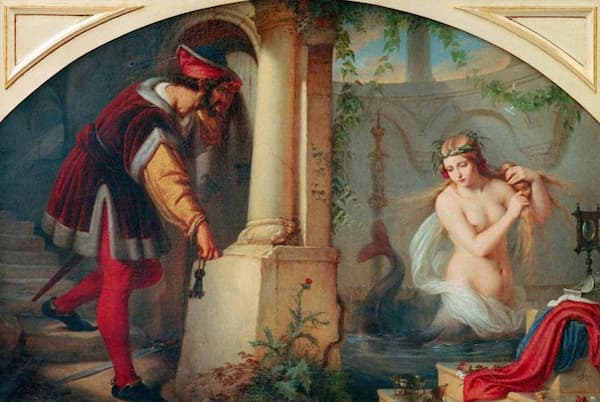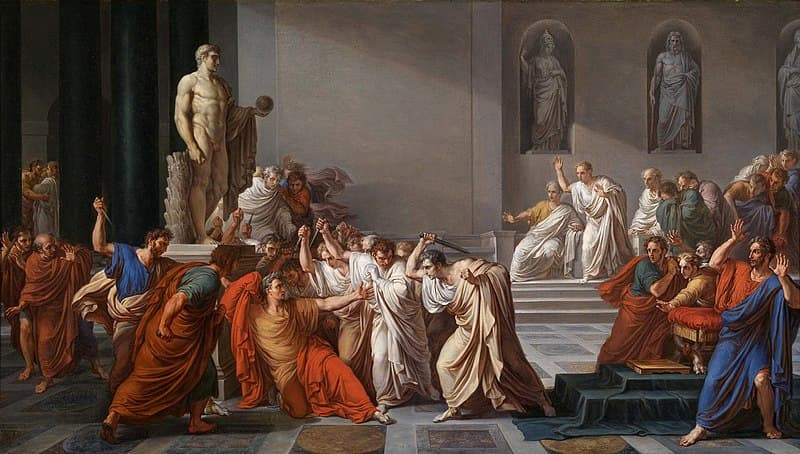William Shakespeare, the immortal “Bard of Avon”, is widely regarded as the greatest writer in the English language and the world’s pre-eminent dramatist. He has given us 38 plays, 154 sonnets, and two narrative poems alongside other verses of uncertain authorship. His poetic language is bursting with colourful rhythms and sounds, and it has inspired musicians throughout the ages and across all genres to engage with his writing. His verses appear in countless operas and Lieder, and they are musically encoded in a substantial number of concert overtures.
Hector Berlioz: King Lear Overture, Op. 4
The overture to King Lear by Hector Berlioz is a wonderful amalgam of literary influence and personal experience. He read King Lear at one of the great emotional crossroads of his life, during a period when he learned that his long-silent fiancée, Camille Moke, was to marry Ignaz Pleyel. He writes in a fit of jealousy, “The packet, which was handed to me, contained a letter the tenor of which was inconceivably painful to a man of my years and temperament. I was beside myself with passion and shed tears from sheer rage. But I made up my mind on the spot what to do. My duty was clear. I must at once proceed to Paris and kill two guilty women and an innocent man. After that, it would, of course, be incumbent on me to commit suicide.” The second guilty woman was Camille’s mother, who was instrumental in arranging the marriage of her daughter. In the event, it was the process of working on his “Ouverture du Roi Lear” that cured Berlioz of his hysterical anger.
Felix Mendelssohn: A Midsummer Night’s Dream Overture, Op. 21
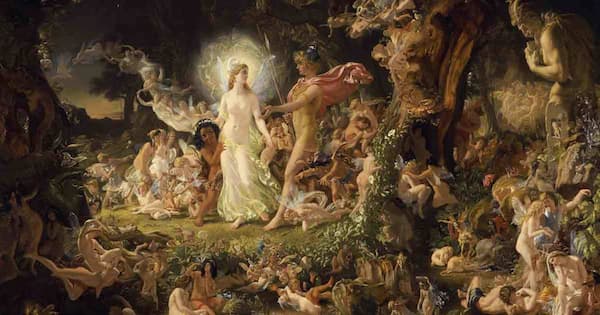
Midsummer Night’s Dream
Felix Mendelssohn: A Midsummer Night’s Dream Overture, Op. 21 (Vienna Philharmonic Orchestra; Christian Thielemann, cond.)
Felix Mendelssohn actually composed music twice for William Shakespeare’s play A Midsummer Night’s Dream. However, it was only a couple of years before his death that he wrote incidental music for an actual production of the play. This setting included the famous “Concert Overture,” Op. 21, which Mendelssohn had already composed at age 17. Inspired by reading the German translation of the Shakespearean play, Mendelssohn’s youthful imagination produced an atmospheric movement that sparkles and shimmers with magical luminosity. Not surprisingly, it has been called “the greatest marvel of early maturity that the world has ever seen in music.” Apparently, Mendelssohn scribbled the famous four evocative chords that open the work after “hearing an evening breeze rustling the leaves in the garden of the family house.” Played by a wind choir, these four wispy chords appear and vanish like vapor, and seductively draw the listener into the magical forest outside Athens. Staccato strings evoke the grace of the fairies, and in less than a minute, Mendelssohn has musically conjured an enchanted world of fairies, love potions and supernatural mischief. The full orchestra, jam-packed with hunting calls, eventually presents the lyrical music associated with the noble lovers. Fortissimo chords in the low strings introduce us to the Mechanicals, and that includes a hilarious musical depiction of Bottom’s braying after Puck has transformed him into an ass. Hunting calls give way to a tightly constructed development primarily concerned with fairy music, and the opening four chords announce the thematic restatement. A gentle modulation in the winds announces a coda featuring a serenely beautiful transformation of the lover’s theme, and the opening ethereal cords bring this magnificent overture to a gentle close.
Pyotr Ilyich Tchaikovsky: Romeo and Juliet Fantasy Overture
Pyotr Ilyich Tchaikovsky thought of himself as a musical dramatist and was always looking for suitable opera subjects. Shakespeare was an obvious choice, and the composer was inexorably drawn to Romeo and Juliet. Stories of doomed love always resonated deeply with the composer, and he excitedly writes, “Nothing more suitable to my musical character. No kings, no marches, no boring old grand opera. Just love, love, love!” Regrettably, nothing ever came of his grand theatrical dreams, but at the beginning stages of his career, he did compose a delightful Romeo and Juliet Overture-Fantasy. Condensing Shakespeare’s narrative, Tchaikovsky first musically approached the subject in 1869 and, after a series of extensive revisions, issued the final version in 1880. A lengthy introduction, scored in Tchaikovsky’s unmistakably vivid and imaginative orchestration, takes the form of a musical prayer, and it invites the listener to look back on a tragedy that has already happened. The “Allegro” proper initially presents oppressively brutal music, signifying the clashes between the houses of Montague and Capulet. This forceful and dramatic characterisation is contrasted by the rapturous love theme for Romeo and Juliet. It is undoubtedly one of the greatest and most achingly beautiful melodies ever written. The second statement of this theme is cruelly interrupted by music for the warring families, as contrapuntal conflict based on both themes decisively crushes Romeo and Juliet’s love. The love theme does reappear transfigured in the minor mode, before the Overture ends on a triumphant and ethereal note.
Henry Balfour Gardiner: Overture to a Comedy
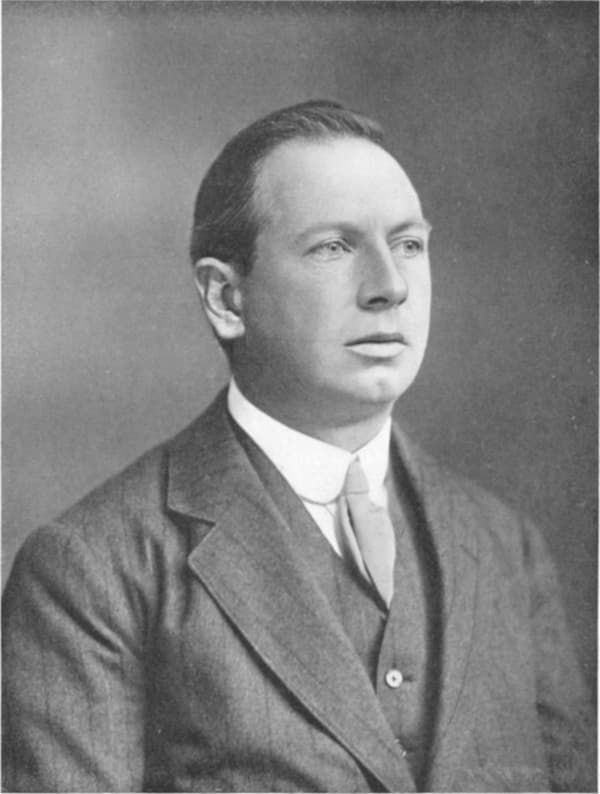
Portrait of Henry Balfour Gardiner, 1912
Henry Balfour Gardiner: Overture to a Comedy (BBC National Orchestra of Wales; Rumon Gamba, cond.)
Henry Balfour Gardiner’s Overture to a Comedy is probably not based on any particular Shakespearean play, but it is a brilliant orchestral showpiece unfolding in high spirits with sudden intrusions of dissonances. Gardiner was one of the “Frankfurt Group,” which also numbered Percy Grainger, Cyril Scott, Norman O’Neill, and Roger Quilter, British and other Commonwealth composers who studied at the Conservatory in Frankfurt am Main. Gardiner was independently wealthy, and he played a very considerable role as a patron and director of the Balfour Gardiner Concerts before the First World War. He strongly supported a whole generation of British composers, including Holst, Bax, Grainger, and Frederic Austin. “While the representation of composers in Gardiner’s concerts was on a broad spectrum and included the establishment figureheads Stanford and Parry, inevitably, there were omissions. Holbrook’s music was absent, and the composer and conductor Julius Harrison had been unsuccessful in getting one of his own works accepted for the concert.” However, Gardiner became an important promoter of Delius, specifically after the composer had died. His Overture to a Comedy was performed at Queen’s Hall in 1906, and a revised version sounded in the same venue in May 1911. As a reviewer wrote, “it is an accomplished and very likeable composition in its overall esprit and impish sense of fun and also its quixotic changes of mood.”
Johannes Brahms: Academic Festival Overture, Op. 80
Another comedy of sorts unfolded when Johannes Brahms accepted the honorary degree of Doctor of Philosophy from the University of Breslau. Brahms had only received an elementary education, and his engagement with higher education was, at best, peripheral. As such, he was extremely flattered and casually sent them a little thank-you note, saying that he would come to Breslau next year in hopes of enjoying a few “doctoral beers.” However, Bernhard Scholz, the Director of Music in Breslau, made it clear that the university expected something a little bit more substantial. A “grander gesture” of thanks would be required, and no less than a freshly composed symphony would do the trick. Brahms was taken aback, and it took him more than a year to compose his doctoral thesis, the Academic Festival Overture. Scholz disliked the name and suggested “Viadrina”, the Latin name of the River Oder, which flows through Breslau instead. Brahms thought about it for a second and then discarded the suggestion. And since Brahms had a rather wicked sense of humour, it was hardly a composition the University had expected. Instead of a symphony or grand choral work, Brahms provided a medley of student songs celebrating drinking and general rowdiness, and that included a fraternity initiation ballad.
George Gershwin: Cuban Overture
Escaping his hectic work schedule in 1932, George Gershwin visited Havana, the capital city of Cuba. At that time, Cuba was a highly popular tropical retreat for wealthy Americans, “as well as a convenient place to consume liquor during the days of Prohibition in America.” And Gershwin didn’t hold back. Under the hot tropical sun, he played golf, took extensive boat trips, gambled a good deal in the local casinos and was a frequent visitor to various dance parlours. Being surrounded by Latin bands with their exotic melodies, rhythms and homemade percussion instruments, Gershwin decided to compose his own musical impression. He took some of the instruments home for study, “and the following July created an orchestral souvenir of his trip, including maracas, claves, bongos, gourds and all.” Originally, he titled the piece “Rumba,” but then changed his mind and published it as his Cuban Overture. “When people read Rumba,” he explained, “they expect “The Peanut Vendor.” Cuban Overture gives a more just idea of the character and intent of the music. In my composition, I have endeavoured to combine Cuban rhythms with my own thematic material. The result is a symphonic overture which embodies the essence of the Cuban dance.” The work premiered on 16 August 1933 in the first-ever all-Gershwin concert. Nearly eighteen thousand people were in attendance, with another five thousand turned away. Gershwin called it “the most exciting night I have ever had.”
Samuel Barber: “Overture” to The School for Scandal
For our next comedy, we turn to The School for Scandals by Richard Brinsley Sheridan. First performed in London at Drury Lane Theatre on 8 May 1777, it is a spirited ridicule of affectation and pretentiousness and one of the greatest comedies of manners, a genre of realistic, satirical comedy of the Restoration period. The plot centres on Charles Surface, an extravagant but good-hearted young man. His brother Joseph, supposedly more respectable and worthy, is shown to be a conniving schemer who courts Lady Teazle, the young wife of a wealthy old nobleman. Sir Oliver Surface, their uncle, disguises himself to discover which of his nephews shall be his heir. Joseph is exposed as a hypocrite, and Charles triumphs, winning both fortune and true love. In 1931, Samuel Barber went on a trip to Italy with Gian Carlo Menotti. He made occasional trips to Gressoney to see his composition teacher Rosario Scalero from the Curtis Institute, who spent each summer in Europe. Barber wrote to his parents, “Our lessons went well and my idea for a new piece for orchestra got by.” He later reported that the piece was progressing well, but he failed to arrange a performance of the Overture to “The School for Scandal” at Curtis. It premiered two years later at Robin Hood Dell with the Philadelphia Orchestra. It was to be Barber’s first orchestral composition to have a major public hearing.
Leonard Berstein: Slava! A Political Overture
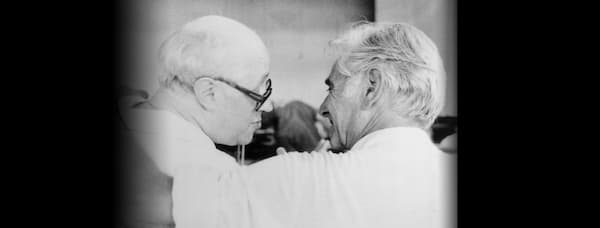
Bernstein and Rostropovich in 1978
Leonard Berstein: Slava! A Political Overture (São Paulo Symphony Orchestra; Marin Alsop, cond.)
In 1977, the celebrated cellist and conductor Mstislav Rostropovich began his tenure as music director of the National Symphony Orchestra at The John F. Kennedy Center for the Performing Arts in Washington, D.C. For his inaugural concert, Rostropovich chose an all-Bernstein program to honor his friend and frequent collaborator. They had first met when the New York Philharmonic went on a State Department-sponsored tour to the Soviet Union in 1959. Bernstein considered Rostropovich an esteemed colleague, explaining, “It doesn’t matter whether we are playing the piano or the cello or conducting.” Rostropovich, in turn, felt strongly about Bernstein’s music and confessed to having “an emotional reaction.” For Rostropovich, “Bernstein is a complete musician, one of the greatest in the world. I think perhaps a performer in music, which Bernstein is, loves more kinds of music than the composer. Bernstein is both composer and performer.” On 11 October 1977, Rostropovich invited Bernstein to premiere three new works; Songfest, Three Meditations for cello and orchestra based on music from Mass, and Slava! A Political Overture, which reworked two numbers from the musical 1600 Pennsylvania Avenue. In fact, Slava had been specifically composed for this concert, which opened the festivities. The title “Slava” references a triple meaning. For one, it is the Russian word for “glory” and also the name of an old Russian folk tune quoted by composers from Beethoven to Rimsky-Korsakov and beyond. It was also Rostropovich’s nickname. The subtitle “A Political Overture” is explained by an unexpected twist in the music, when a pre-recorded tape of election candidates shouts hyperbolic political slogans supported by a cheering crowd of conventioneers.
Svitlana Azarova: “Overture” Mover of the Earth, Stopper of the Sun
Overtures for the Concert Hall are still popular with classical music audiences, and they are still being composed in the 21st century. In 2013, the Orchestre National d’Île-de-France commissioned Ukrainian composer Svitlana Azarova to write a concert overture for a large orchestra. Azarova, born on 9 January 1976 in the Ukrainian SSR graduated from the Odessa State Conservatoire in 2000 with a degree in composition. A Member of the Ukrainian Composers’ Union, her works have been performed at numerous Festivals and Arts Projects, and she has received important commissions from Denmark, France, the Netherlands, Switzerland, and the Polish Institute in Kyiv. For this particular commission, Azarova turned her attention to the Renaissance astronomer Nicolaus Copernicus. The title of the work Mover of the Earth, Stopper of the Sun refers to a Latin inscription by Alexander von Humboldt featured on the Copernicus Monument in Toruń. In her score, Azarova graphically and musically depicts Copernicus’ heliocentric cosmology, which famously displaced the Earth from the centre of the universe. The initial measures depict the Sun, followed by a musical portrait of the Earth. Jupiter, which is Copernicus’ planet, is announced in the oboes and clarinets, and Mars, the planet of conductor Enrique Mazzola, is sounded in flutes and oboes. Finally, we also hear a musical representation of Saturn, which is Azarova’s planet.
For more of the best in classical music, sign up for our E-Newsletter

